16 OCTOBER 2019
The key to driving value and generating loyalty among customers is providing a frictionless experience. In addition to the use of technology, this article outlines five ways to reduce friction in the hotel experience.

By Rick Garlick
The subject of friction is receiving a lot of attention among those who work to improve customer experience. Friction is defined as any touchpoint in the customer experience that creates an impediment causing additional effort, tension or frustration. These impediments can range from being mildly annoying to so critical they push the customer away from ever again wanting to do business.
Conversely, experiences that have little or no friction are recognized for creating high value. A frequent benefit of high loyalty program status is the opportunity to reduce friction in the form of shorter lines, dedicated customer service numbers, early check-in/late check-out and many other hassle-reducers. It’s particularly noteworthy that in the airline industry, customers are often willing to pay extra to get through security quicker, board the flight earlier and have better access to overhead space.
In the hotel sector, a great deal of effort has been put forth to reduce customer friction through the use of technology. Websites are constantly being revamped to improve the booking and selection process. New alternatives are being created for guests to bypass the front desk and go directly to their rooms. Apps are being created to give the guest quicker access to the things they need to make their stay more seamless. While these things are great, the technological enhancements can represent a source of friction themselves if there are any glitches in the system.
While technology is an area that receives a great deal of attention, both for its potential to improve and detract from the guest experience, there are other quick fixes for reducing friction in the hotel experience.
Empower staff to resolve problems on the first contact
As customers, we all know what it’s like to be put on hold while someone looks for another person with the authority to resolve an issue. Nothing is more annoying than bringing a concern to a front-desk agent only to have them make you wait while they ask a manager for permission to grant your request. It’s understandable that sometimes the first person to whom you speak to may not have the actual ability to resolve your issue, which leads to the next recommendation.
Train your staff to own your customers’ issues regardless of whether they are responsible
Your customers don’t want to be transferred to another department or have to explain their situations a second or third time. If a customer approaches an employee, train all employees to assist that customer to the best of their ability rather than simply saying, “Sorry, it’s not my job.” Those are the words a customer never wants to hear and immediately creates a sense of friction.
Talk about what you can do rather than what you can’t do
Sometimes you simply can’t accommodate a request, whether it be for a transient guest or a meeting planner. Rather than talk about what you can’t do, provide creative alternatives and focus on collaborating with your customer to make a reasonable accommodation.
Don’t ever say it’s our policy/it’s not our policy
When an employee tells a guest, “We can’t—it’s not our policy,” that shows they won’t help you because they’re either not empowered to or don’t want to make the extra effort to accommodate an existing rule. It’s understandable that policies exist to provide guidelines, but nothing facilitates or detracts from customer loyalty more than how the staff handles that situation. Policies that produce high levels of customer friction also create friction for employees since most people don’t like dealing with frustrated customers. If an exception cannot be made, provide some acknowledgement or accommodation to the customer rather than leaving them with a cold, empty feeling.
Simplify processes
This is a key friction reducer, regardless of the industry. Sometimes processes are just too complex and require too much work on customer’s part. This is where technology is often employed to help, but people can also make a difference. In the hospitality business, the process of checking in and out, finding your room, getting your key, finding out perhaps your key has become demagnetized, etc. can be frustrating, particularly for late-night arrivals. Consider customer feedback when individuals complain about the lack of simplicity and adjust wherever possible.
All sources of friction are not created equal. Some have much greater impact than others, whether it be related to technology, service or processes. The goal is to understand where your guests, meeting planners and employees find their greatest frictions and strategically find ways to reduce them. This is the key to driving value and generating loyalty among your customers, even more so than having a nice property with a lot of amenities. You will find that your guests will write reviews about traveler friction more than anything else.
Dr. Rick Garlick is Vice President, Strategy Consultant for Magid Associates. He has a diverse research and consulting background that includes extensive experience with customer experience management, employee engagement measurement and training; talent selection; brand research; customer loyalty programs; image and awareness studies; and national opinion polling.
The opinions expressed in this column do not necessarily reflect the opinions of Hotel News Now or its parent company, STR and its affiliated companies. Bloggers published on this site are given the freedom to express views that may be controversial, but our goal is to provoke thought and constructive discussion within our reader community. Please feel free to comment or contact an editor with any questions or concerns.

